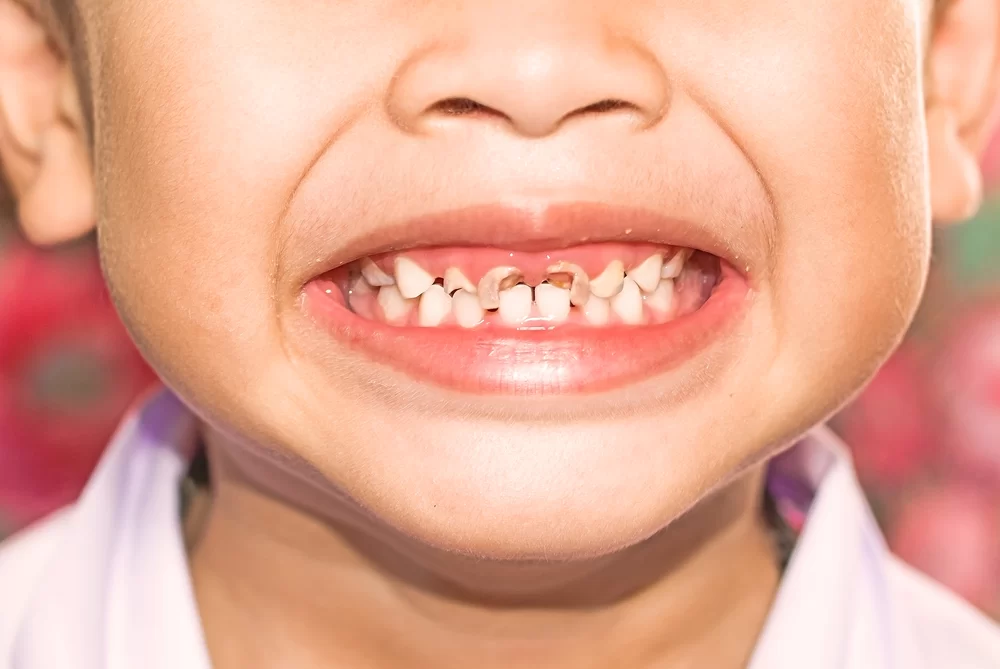
- why-baby-teeth-matter
- early-signs-of-tooth-decay-in-infants
- main-causes-of-infant-tooth-decay
- effective-daily-oral-care-routines
- feeding-habits-that-support-healthy-teeth
- real-parent-story-preventing-baby-tooth-decay
- when-to-see-a-pediatric-dentist
1. Why Baby Teeth Matter More Than You Think
Many parents underestimate the importance of baby teeth, often assuming that since they'll fall out eventually, they don’t require much care. But the truth is that infant dental care is crucial. Baby teeth play a vital role in helping your child speak clearly, chew properly, and maintain space for adult teeth. Neglecting oral hygiene for babies can lead to early childhood caries, a painful condition that may affect eating, sleeping, and overall well-being.
2. Early Signs of Tooth Decay in Infants
Recognizing the early signs of tooth decay in infants is essential for timely intervention. Common symptoms include white spots on the teeth (especially near the gumline), visible pits or dark spots, and increased sensitivity or irritability when feeding. These subtle signs often go unnoticed until the decay has progressed. Early detection makes prevention and treatment much easier—and less stressful for your baby.
2.1 Pay Attention to Behavioral Changes
If your baby suddenly becomes fussy during feeding or avoids certain foods, it could indicate discomfort caused by tooth decay. Unusual drooling, gum swelling, or trouble sleeping may also signal a problem. Consistent monitoring and routine dental checkups can help catch issues early.
3. Main Causes of Infant Tooth Decay
Understanding what causes baby tooth decay helps in creating effective prevention strategies. The most common culprit is prolonged exposure to sugary liquids like milk, juice, or formula—especially when babies sleep with bottles. Oral bacteria thrive on sugars, producing acids that erode tooth enamel.
3.1 Bacteria Transfer from Caregivers
Sharing spoons or cleaning pacifiers with your mouth may seem harmless, but it can transfer cavity-causing bacteria to your infant. It's vital to maintain your own oral hygiene to protect your child’s dental health.
3.2 Lack of Routine Cleaning
Even before teeth appear, bacteria can build up on your baby's gums. Infrequent or improper cleaning allows harmful microorganisms to settle, leading to early decay once teeth erupt.
4. Effective Daily Oral Care Routines for Babies
Creating a consistent oral hygiene routine from birth is the foundation of baby tooth decay prevention. Before teeth come in, gently wipe your baby’s gums with a soft, damp cloth twice a day. Once the first tooth appears, switch to a small, soft-bristled toothbrush and use a smear of fluoride toothpaste (about the size of a grain of rice).
4.1 Making Brushing Fun
Sing a favorite song, use a colorful toothbrush, or brush together to make the routine enjoyable. Consistency is key—brush at the same times each day, usually after breakfast and before bed.
5. Feeding Habits That Support Healthy Teeth
Feeding practices play a significant role in oral health. Avoid putting your baby to bed with a bottle, and don’t let feeding sessions drag on unnecessarily. As your child begins solids, offer tooth-friendly snacks like soft fruits and vegetables instead of sugary treats.
5.1 Breastfeeding and Bottle Feeding Tips
While breastfeeding has many benefits, prolonged on-demand nursing—especially at night—can contribute to decay if teeth aren’t cleaned afterward. If bottle-feeding, limit sugary liquids and always finish with water if given during the night.
6. Real Parent Story: How One Mom Protected Her Baby's Smile
Samantha, a new mom from Austin, noticed tiny white spots on her 10-month-old daughter’s top teeth. Concerned, she visited a pediatric dentist and learned they were early signs of decay. She was shocked—they always wiped her mouth after meals. The dentist explained that falling asleep with a milk bottle and occasional juice were the likely culprits. Since then, Samantha introduced a strict brushing routine, offered only water at night, and followed up with regular dental visits. Her daughter’s teeth are now healthy, and Samantha emphasizes the importance of early education in parenting forums.
7. When to See a Pediatric Dentist
The American Academy of Pediatric Dentistry recommends scheduling your baby’s first dental visit by their first birthday—or within six months after the first tooth appears. This initial visit is crucial not just for detecting problems early, but also for educating parents about proper oral hygiene and feeding practices.
7.1 Benefits of Early Professional Care
Early visits help familiarize your child with the dental environment, making future appointments less intimidating. A pediatric dentist can also provide fluoride treatments or sealants if needed. If you're unsure where to start, visit our website Dentistry Toothtruth to find trusted service recommendations tailored to your family's needs.







 Westgate Dental Arts
Westgate Dental Arts Coventry Family Dental
Coventry Family Dental Familia Dental
Familia Dental Dr. Daniel S. Fife, DDS
Dr. Daniel S. Fife, DDS Dentistry At Suburban Square: Michael I. Wollock, DMD
Dentistry At Suburban Square: Michael I. Wollock, DMD Comfort Care Dental
Comfort Care Dental The Importance of Oral Health Education During Pregnancy for a Healthy Pregnancy
The Importance of Oral Health Education During Pregnancy for a Healthy Pregnancy Why Skipping Dental Checkups Can Lead to Bigger Oral Health Problems
Why Skipping Dental Checkups Can Lead to Bigger Oral Health Problems Advantages of Porcelain Dental Restorations
Advantages of Porcelain Dental Restorations Best Tips for Brushing Your Teeth Properly for Healthy Gums: Essential Techniques for Oral Health
Best Tips for Brushing Your Teeth Properly for Healthy Gums: Essential Techniques for Oral Health How Can Diabetes Cause Tooth and Gum Problems? Preventing and Managing Oral Health Issues
How Can Diabetes Cause Tooth and Gum Problems? Preventing and Managing Oral Health Issues Healthy Habits for Promoting Good Oral Health and Hygiene: Tips for a Healthy Smile
Healthy Habits for Promoting Good Oral Health and Hygiene: Tips for a Healthy Smile